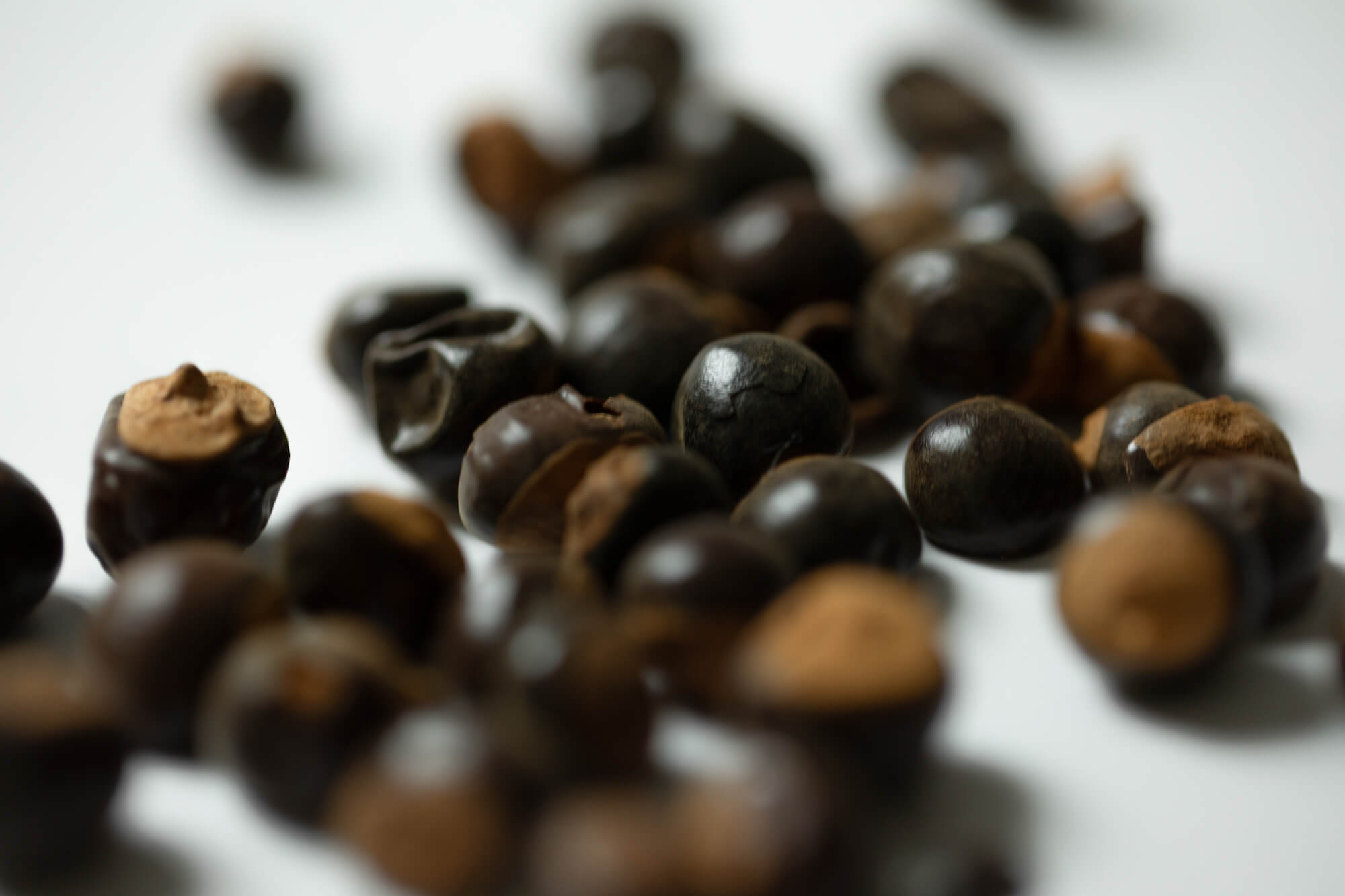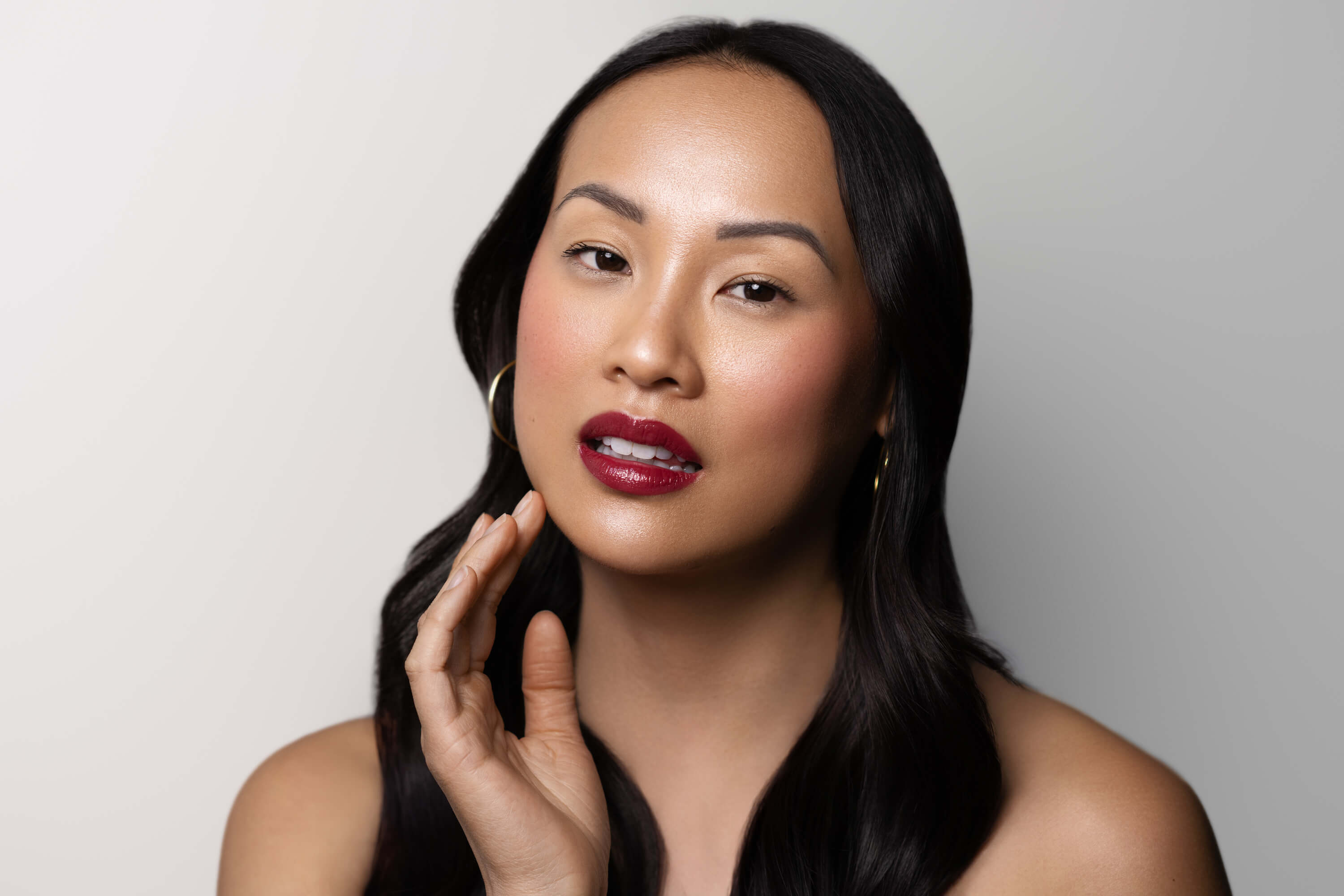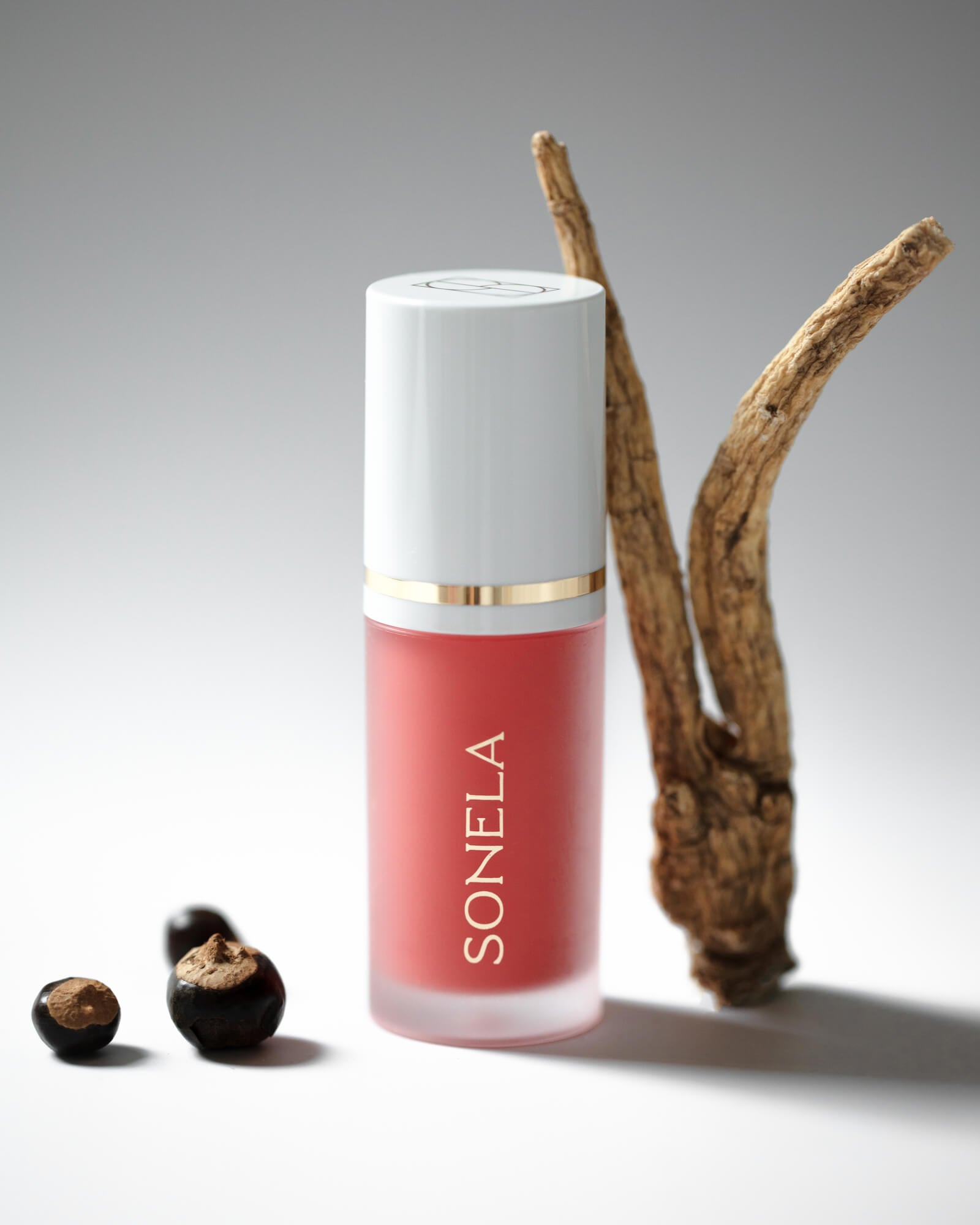
Ingredients
Our ingredients have been carefully selected from sustainable and responsibly sourced suppliers, ensuring that our products are derived from nature without causing harm to ecosystems or communities.
Discover products that embrace beauty mindfully.

The finest ingredients
Chosen with intention for their skin-hydrating properties.
Discover our fully pigmented and clinically tested formulas, expertly developed to deliver radiant color and enhance your natural beauty.
Ingredients Glossary
Packed with essential fatty acids that nourish and revitalize the skin.
Lips are smoothed, softened, and deeply nourished.
Works together with vitamin E to encourage lip cell growth, antioxidant protection, and improved elasticity.
Helps maintain hydration and retains moisture levels for a long-lasting effect.
Moisturizes, nourishes, and conditions the skin while delivering a calming effect.
Delivers a refreshing cooling sensation.
Increases lip volume and hydration for a fuller look with enhanced definition.
Stimulates collagen production while moisturizing the lips for a firmer, smoother, and plumper appearance.
Rich in omega-6 and omega-3 fatty acids that protect lips from environmental stressors.
Softens, conditions, and smooths the skin while enhancing hydration
Protects, nourishes, and softens to support skin prone to dryness.

What are Adaptogens?
Shield and soothe the skin from external stressors with the calming power of adaptogens.
Found in herbs and plants, adaptogens are natural substances that encourage your body to manage and adapt to stress while promoting overall balance and well-being. Together, they act as stress regulators. Our products are rich in nurturing adaptogenic ingredients, which have been used in ancient Ayurvedic medicine for thousands of years.
Explore Our Adaptogens
Ginseng
Ginseng is used for its invigorative and restorative properties. Promoting natural collagen production and circulation, Ginseng soothes the skin while improving its tone and texture. Its effects help to alleviate redness and inflammation.
Guarana
Rich in energizing properties, Guarana revitalizes the skin, supports circulation and helps to improve the appearance of fatigue. It can also temporarily smooth and tighten the skin with its stimulating, high-caffeine content.
Prickly Pear
With its high vitamin, mineral and antioxidant content, prickly pear nourishes and shields the skin from external stressors. Its hydrating benefits work to soothe irritation and positively contribute to overall skin texture.

Ingredients we don’t use
There are over 2,000 ingredients we refuse to use in our products at Sonela. Instead, we pour our passion and focus into delivering formulations that are clean, safe and effective.
What is it: Carbon black is a material commonly used as a pigment, produced by the incomplete combustion of heavy petroleum products.
Why we don't use it: We do not use carbon black because it has been associated with potential health concerns.
What is it: Deriving from coal, coal tar is a thick, black liquid used in some medical and cosmetic products.
Why we don't use it: We avoid coal tar as it has been classed as a carcinogen and can potentially cause skin irritation.
What is it: Formaldehyde-releasing agents are chemicals that gradually release formaldehyde, sometimes used in cosmetics for their preservative properties.
Why we don't use it: We don’t use formaldehyde-releasing agents as they can irritate the skin and have been classified as possible carcinogens.
What is it: GMOs are organisms that have had their genetic material altered using genetic engineering processes.
Why we don't use it: We avoid GMOs because they can sometimes cause allergic reactions, and there’s question about their potential long-term effects on health.
What is it: As a synthetic oil, Hydrogenated polyisobutene is used in cosmetics to improve their texture and give them a soft feel.
Why we don't use it: We don’t use hydrogenated polyisobutene as it is claimed they can interfere with the skin’s natural processed by trapping impurities.
What is it: Hydroquinone is known for its skin-lightening properties that can be used to improve hyperpigmentation.
Why we don't use it: We exclude hydroquinone as its skin-irritating properties have been correlated with possible long-term health risks.
What is it: Deriving from petroleum, Mineral oil is a colourless oil that is often used in cosmetics for its emollient quality.
Why we don't use it: We exclude mineral oil because it can block pores, interfering with the skin's natural breathability and repair function.
What is it: Parabens are a type of commonly used preservatives in cosmetic and pharmaceutical products.
Why we don't use it: We exclude parabens due to their potential to disrupt hormone function.
What is it: Derived from petroleum, Paraffin is a moisturising waxy substance.
Why we don't use it: We exclude paraffin as some claim it can prevent the skin’s natural functions by forming a barrier that traps impurities.
What is it: Polyethylene glycol (PEG) compounds are emulsifiers that support the mixing of different cosmetic ingredients.
Why we don't use it: We don’t use PEG compounds as they can possibly be contaminated with skin-irritating impurities.
What is it: Phthalates are a group of chemicals usually found in personal care products, used to make plastics more hardwearing.
Why we don't use it: We avoid phthalates because they have been linked to certain health issues, including disrupting hormones.
What is it: Silicones are synthetic polymers that give many cosmetics a smooth finish, allowing them to be easily applied.
Why we don't use it: We avoid silicones as they can hinder the skin’s natural function by forming an impurity-trapping barrier.
What is it: Sulfates are surfactants commonly used in cleaning and cosmetic products for their foaming properties.
Why we don't use it: We don't use sulfates because they can strip the skin's natural oils, resulting in dryness and irritation.
What is it: Talc is a mineral used in many cosmetic products for its moisture-absorbing nature.
Why we don't use it: We stay clear of talc due to concerns about contamination with asbestos and the associated respiratory risks.
What is it: Like triclosan, Triclocarban is an antimicrobial agent used in certain cosmetics for its antibacterial nature.
Why we don't use it: We exclude triclocarban as it can be disruptive for hormones and play a role in antibiotic resistance.
What is it: Triclosan is an antimicrobial agent that’s used to fight bacteria and prevent their growth or contamination.
Why we don't use it: We avoid triclosan since it has been connected to hormone disruption and linked to the growth of antibiotic-resistant bacteria.




